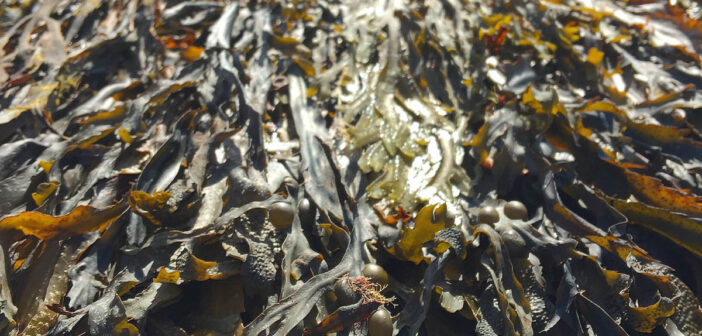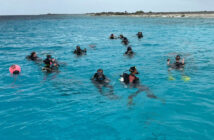In March 2023, word swept through the boating community that a giant seaweed ‘blob’ was en route to eastern North America.
Known in professional circles as The Great Atlantic Sargassum Belt, the mass began formulating off Africa’s west coast over the winter before making its annual spring journey across the Atlantic.
The blobs form every year between the Caribbean and West Africa in the Sargasso Sea (hence the name), at which point the currents push it west towards North America. A unique combination of nutrient-rich water, steady currents, and bad luck created an unusually large mass in 2023, which had governments and businesses all over the Eastern Seaboard scrambling to prepare for its arrival.
The mass spanned more than 5000 miles (8000 kilometers) and stretched all the way from the west coast of Africa to the Gulf of Mexico. Several coastal areas were told to prepare for up to three feet of Sargassum on their beaches.
Not only is the seaweed a nuisance, it also rots once it reaches landfall, and the stench is enough to drive anyone off the beach. Sargassum contains sulfur, which has the distinct aroma of rotten eggs.
But while the ‘blob’ may be a scourge to boaters, it’s a boon for the ocean. The bloom is essentially a floating ecosystem that absorbs CO2 while providing food, nutrients, and resources to marine wildlife. It’s only once it reaches the coastline and beings rotting that it becomes propeller enemy #1.
However, between the stench and the risk to boaters and beachgoers, scientists have uncovered the biggest hazard of all — a new study has found the bacteria Vibrio present in high levels within decomposing algae trapped inside the Sargassum.
The infamous ‘flesh-eating’ bacteria is known as Vibrio vulnificus and is just one species of the genus. Infections of Vibrio vulnificus can be caused by eating raw or undercooked shellfish, as well as by exposure of open wounds to the bacteria.
Like, say, by going swimming where Sargassum is floating. Or by dropping anchor in a shallow bay anywhere off the East Coast.
Symptoms of Vibrio infection include vomiting, diarrhea, and abdominal pain, with serious cases having the potential to cause the breakdown of skin. The Center for Disease Control and Prevention (CDC) says these can ultimately lead to necrotising fasciitis where the flesh around an open wound effectively “dies” and becomes necrotic.
The study’s authors are encouraging boaters and beachgoers to wash thoroughly if they come into contact with Sargassum. it should also be noted that Sargassum and algae can become sticky and adhere itself to other debris like floating plastic, driftwood, or other hazards.
According to Tracy Mincer, assistant professor of biology at FAU’s Harbor Branch Oceanographic Institute and Harriet L Wilkes Honors College, “Plastic is a new element that’s been introduced into marine environments and has only been around for about 50 years. Our lab work showed that these Vibrio are extremely aggressive and can seek out and stick to plastic within minutes. We also found that there are attachment factors that microbes use to stick to plastics, and it is the same kind of mechanism that pathogens use.”
“We really want to make the public aware of these associated risks. In particular, caution should be exercised regarding the harvest and processing of Sargassum biomass until the risks are explored more thoroughly,” he added.
In terms of the U.S. response near boating hotbeds, Florida’s Department of Health is advising residents and visitors to avoid Sargassum wherever possible.
A typical case of vibriosis lasts about three days, according to the CDC. However, people with a Vibrio vulnificus infection can become dangerously ill quickly. Advances cases may require intensive care and the possibility of limb amputation or significant removal of damaged skin and organs. About one in five people who become infected with Vibrio vulnificus will die, sometimes taking only 1-3 days from the onset of symptoms.
However, on a more positive note, scientists at the University of South Florida (USF), who are tracking the Sargassum using satellite imaging, say the amount in the Atlantic unexpectedly decreased by about 15% in May.
“[That] is good news for many coastal residents of Florida,” the university’s optical oceanography laboratory says on its website.
The Sargassum levels in the Gulf of Mexico are also expected to drop in June. However, researchers expect the large uptick in Sargassum masses over the past decade to continue. The leading theories surrounding the annual increase including excessive sewage and fertilizer levels in the Atlantic causing nitrogen levels to surge, creating an ideal environment for Sargassum to grow and bloom.









